Director – Robert Eggers – 2022 – US – Cert. 15 – 136m
*****
A 10th Century Viking prince vows revenge on his father king’s killer and sees it through to death – out in cinemas on Friday, April 15th
Young Viking Prince Amleth (Oscar Novak from The Batman) is thrilled when his warrior father King Aurvandil War-Raven (Ethan Hawke) returns with a line of prisoners in two to his fortified stronghold and Queen Gudrún (Nicole Kidman). Father and son are devoted to each other, participating in a private ritual involving bodily sounds and consumption of an hallucinogenic liquid that causes the boy to experience a vision of his family line: a tree of life where the trunk is a spine and branches are umbilical cords attached to grown kings as the viewpoint pans up reveal the boy attached to the highest cord. He is now prepared to take over the rule of the kingdom when his father dies.
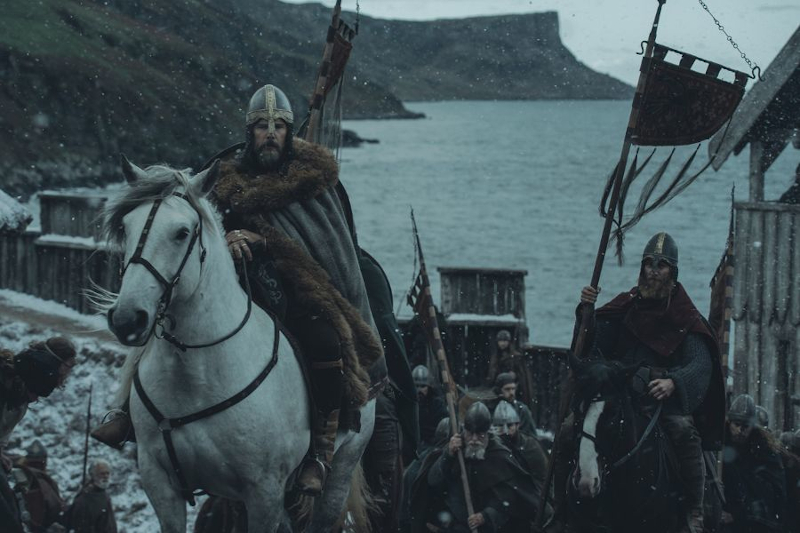
He doesn’t seem to get on quite so well with his mother, who warns him never to enter her room unannounced. At a banquet in honour of Aurvandil, his dour brother Fjölnir (Claes Bang from The Square, Ruben Östlund, 2017) takes exception to court jester Heimir the Fool (Willem Dafoe).
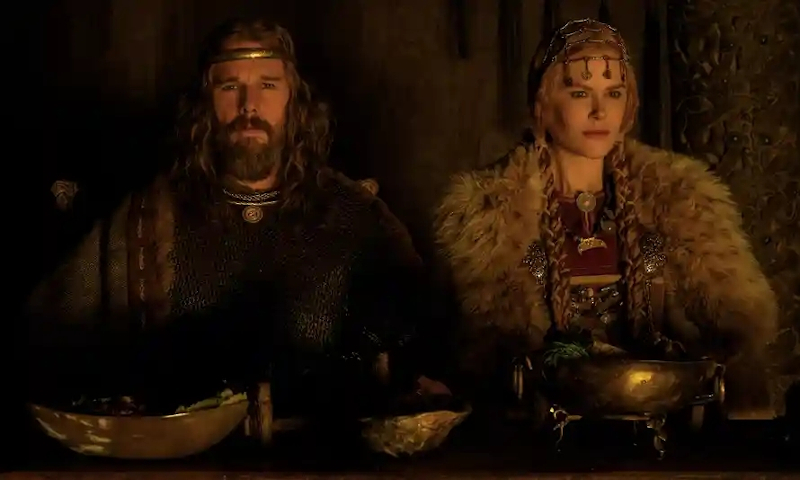
The boy’s elation at his father’s return is short-lived, however, because when the king and prince are out riding together soon after, the father is ambushed and shot with arrows by Fjölnir. The boy’s fatally wounded father shouts at him to flee; there follows a woodland pursuit during which the boy demonstrates a warrior’s mettle when he cuts off the nose of one of Fjölnir’s men Finnr (Eldar Skar) before seeing his mother carried off by Fjölnir. Amleth escapes in a boat out to sea, vowing to avenge his father and save his mother.
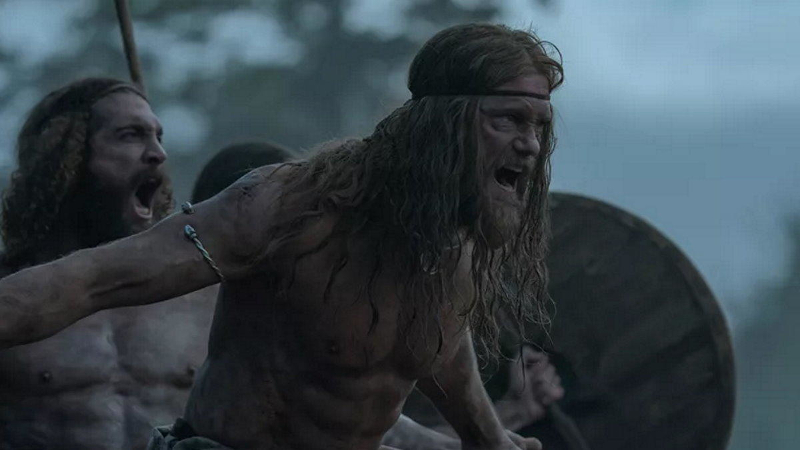
The grown Amleth (Alexander Skarsgård) becomes a Viking berserker raiding villages until he learns of a group of captives due to be sent as slaves to his uncle, now known as Fjölnir the Brotherless, who has fallen on hard times having lost the kingdom to a rival and now effectively runs a small fief, rendering his earlier treachery rather less worthwhile than it seemed at the time. Nevertheless, Amleth brands himself with an iron and conceals himself among the slaves, attracting the attention of fellow slave Olga (Anya Taylor-Joy) en route. When they arrive at the fief, Amleth bides his time, little by little exacting his vengeance on his uncle’s people to ultimately rescue his mother. Only it doesn’t quite work out like that.
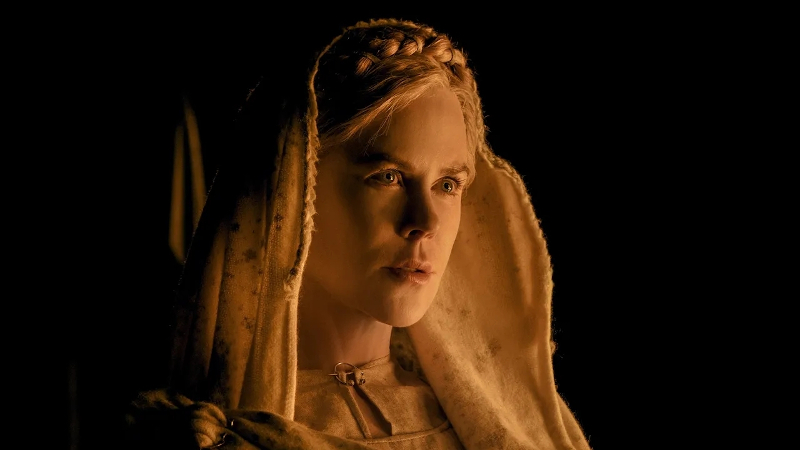
If Eggers’ intent were to glorify violence, he probably wouldn’t shoot it the way he does. There are beheadings or decapitations shown at a distance or in silhouette, a nose-slicing where you don’t really see what happens at the time but the immediate and lifelong aftermath is shown in the disfigured facial appearance of Finnr the Nose-Stub. A number of scenes of unspeakably gory horror are hinted at in build-up then shown in their aftermath, in much the same manner as the infamous ear-slicing scene in Reservoir Dogs (Quentin Tarantino, 1995) where you know exactly what’s going (or gone) on without being actually shown the atrocity happen. This is never more apparent than when Amleth enters a house in Fjölnir’s village at night and disappears through the doorway into the darkness beyond, accompanied by a few sound effects, only for us to be immediately presented with a tableau of dismembered limbs and body parts affixed to the outside of the dwelling the next day.

That said, there are numerous instances of people on the ground being hit by cudgels or similar, where you see the perpetrator deliver the blow but the recipient and the actual impact is out of shot. Equally, there are two big, action set pieces – Amleth’s participation in a berserker raid on a Slavic village about half an hour in and his wreaking destruction upon Fjölnir’s farmstead towards the end. Both are lovingly choreographed, with Eggers preferring lengthy, fluid, single takes to capture the action over the multiple camera and frequent cutting often used for such scenes, and there are moments where, thanks to computer FX trickery unthinkable half a century ago, you watch blades fully and fatally penetrate flesh. In your head, you know this isn’t real, but on the screen it looks pretty convincing.
Violent it may be, but the drama is ultimately character-driven, as interested in its main protagonists Amleth, Fjölnir and Olga as comparatively minor ones. From the moment she first appears as a slave, Anya Taylor-Joy casts a penetrating presence as Olga, bolstering it later with a confrontation where she thrusts unwelcome menstrual blood in Fjölnir’s face. Her slow yet seemingly inevitable move into Amleth’s affections, if earthy, provides a striking counterpoint to Amleth’s slow but inevitable progress towards vengeance. Eventually, he sees another tree of life vision topped by the two children she will give him.
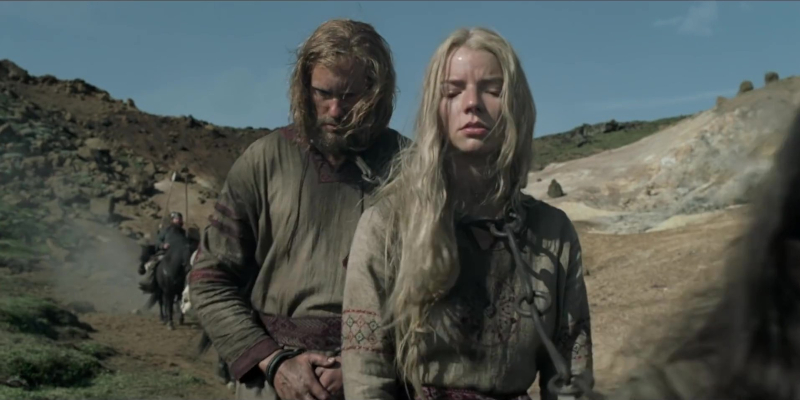
Queen Gudrún comes to the fore mostly when away from either of her two husbands, a fascinating embodiment of female power within a Viking dynasty, and the truly devastating scenes when the adult Amleth attempts to save her prove as good as anything else the actress has ever done. As for her and Fjölnir’s family, there are two sons, the older Thórir the Proud (Gustav Lindh) who is earmarked as a nasty bit of work the moment he first lords it over Amleth and the younger, more sympathetic Gunnar (Elliott Rose) who nearly gets himself killed when attempting an impromptu move onto the playing field of a brutal five-a-side ball game, in which heads are lethally whacked by hockey stick precursor cudgels, as he spots an opening to score a goal. Björk briefly turns up in a rare acting appearance as a Slavic seer, leaving a mark on what follows.
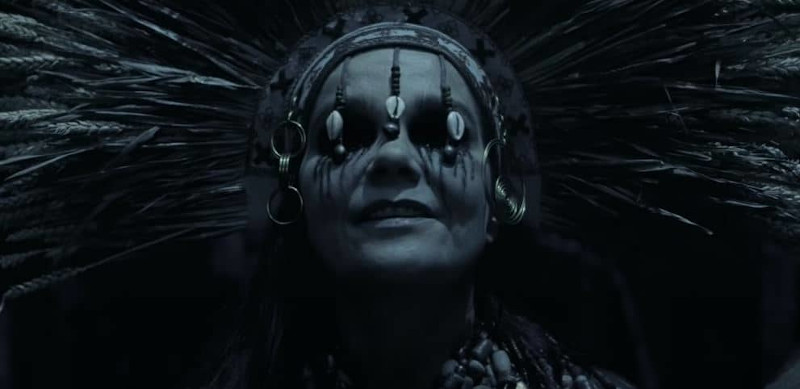
Taken from the same source material that inspired Shakespeare to write Hamlet, the Scandinavian Amleth myth, this is at once an extremely violent revenge drama and a recreation of 10th Century Viking culture on the screen in breathtaking detail. The shocking and unstoppable nature of the mayhem seems to be constantly at odds with the fascination at painstakingly recreated, period environments. The living and dying by the sword rendered as a flow of arrow piercings, running throughs, stabbings and decapitations, not to mention dismembered body parts, is at once repulsive and compelling – fast-moving and breathtaking at times, slow-burning and biding its time at others – while the pervasive, historical minutiae throughout make you feel you’re genuinely watching events back in the 10th century, as if the audience is being gently shepherded through a convincing and authentic, interactive experience with all the curatorial care of a well-researched, museum exhibition on Viking life.
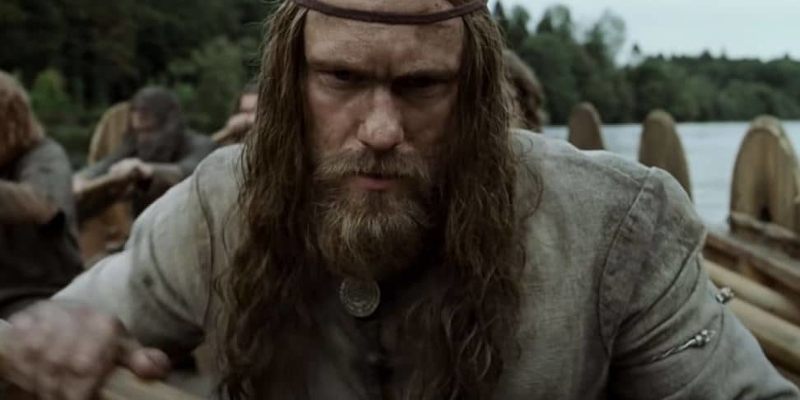
There’s something deeply unsettling about this mix, so much so that it’s tough to find exactly the word to best describe the (montage? collision? marriage? heady brew?) of these two elements. A bigger budget affair than Eggers’ previous efforts The Witch (2015) and The Lighthouse (2019), it boasts a similar attention to period detail. It’s very much its own film, however, and if its intention is to put the Vikings onscreen in a manner representative of the way they lived, thought and experienced the world, it succeeds in spades. It is extremely violent (although, amazingly, only a BBFC 15) and not for the faint of heart. As is pretty obvious from the trailer.
The Northman is out in cinemas in the UK on Friday, April 15th.
Trailer:
Trailer 2:
